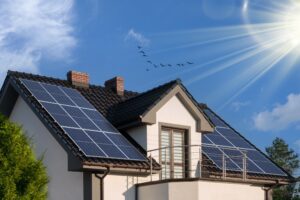Distribution Network Operators (DNOs) are responsible for ensuring that electricity reaches consumers, whether residences, businesses or other types of premises. They do this by managing and operating infrastructure that is vital to the electricity supply chain, ensuring that the energy ecosystem of the country is efficient, maintained and backed up with failsafe.
When you want to get a project off the ground, such as a solar power system or EV chargepoints, that requires new electrical connections or the modification of existing ones, you need to be approved by the relevant DNO. They will then ensure that all work being done is safe, compatible, and doesn’t affect other peoples’ energy supply.
So how do you put together an application that checks all the boxes? Effective Home has put together this guide to ensure that the process is smooth, easy and attractive to the DNOs.
Preparing your DNO Application
The preparation phase is always one of the most important phases of any plan. How well you prepare directly correlates to your options and performance later on.
Project Specifications
The number one thing you must ensure when you write up your application is your project’s purpose, and that is done by laying out the following:
- Project Type – Where is the project taking place, and what is happening? These two questions determine the type of project you’re pursuing. For example: Residential Developments.
- Project Purpose – What is your intended use of the project? Ensure that you highlight the aspects that you feel will influence what you require for electrical power. For example, if you’re trying to house people, how many are you housing in what area? If it’s dense living, then you will have to ensure that you state this, as this will result in more power being required for the building.
- Project Scale – Detail the size of the proposed developments. What is the total floor area of the land being worked on, as well as the size of the land around it? How many units or buildings are being worked on? There may be some special information required here, such as the capacity or output for proposed industrial and/or renewable energy projects.
- Project Electrical Needs – This will be fairly exhaustive, but ensure that you list the different electrical demands that your project will need. This includes load characteristics, including average and peak load estimates.
- Development Timeline – Provide a timeline for the project, from start to finish with particular emphasis on the key milestones along the way. These milestones could be anything from construction start dates, expected completion dates and the different phases of electrical connection.
- Create a Tailored Quote Based On Your Circumstances
- Takes Less Than 2 Minutes
- Fixed-Online Quotes

Site Plan
Whilst you’ll have already added some details about the project scale, this will be the section in which you lay out the entirety of the details about the location.
- Geographic Location – Mark the geographic location of the proposed development, as well as relevant landmarks of reference points. This will aid in locating and orienting the site itself. Ensure you indicate the cardinal directions.
- Detailed Layout – The layout of the building that you will draw up must include all buildings, structures and facilities within the proposed development zone. Calculate and display the dimensions of each element, and the distance between each.
- Existing Electrical Infrastructure – Identify on the map where electrics already exist. Detail where and what they are connected to (substations etc).
- Proposed Electrical Connection – Finally, clearly indicate where you want to connect your electrics to in your new project. Outline the proposed routes for the new connections and ensure that you keep them all as efficient and non-disruptive as possible.
- Potential Disruptions – Mark any potential disruptions to your proposed plan. This could be anything from protected areas, such as large bodies of water, or already existing construction, such as water/gas pipes and telecommunication lines.
Calculate Energy Demands
This is one of the most important parts of the application. There are two things to understand about your energy demands.
- Average Demand – This is essentially the standard of how much load your electrics will be under per day. It’s calculated by averaging the expected consumption of your electricity within the development zone per day.
- Peak Demand – This refers to how high the electrical demand will be at any one point in time. This is important to note so that the system can be optimised to handle these surges in power, as systems not set up with this in mind may end up causing power cuts, degradation of service, or outright destruction of property.
In order to make these calculations, do the following:
- List Electrical Loads – Catalogue all sources of electrical consumption within your project, both existing and new. Look at:
-
-
- Lights
- Heating
- Ventilation
- Air Conditioning
- Machinery
- Specialised Equipment
-
- Calculate Individual Loads – What is the power rating of your equipment and systems? You should only need to check manufacturer specifications to get these figures.
- Estimate Usage Patterns – How will each of these items be used? Consider the operation hours of the equipment, and how intense the use will be.
- Aggregate Data – Calculate together both the average and peak demand scenarios for the equipment from the usage patterns and individual loads.
The Application
Now that you’ve got the documentation together, now is the time to go for the application.
First Meeting
Contact the DNO as early as possible to discuss your project. They will give you advice based on what you tell them, which should be a brief overview of your project (location, nature, scale).
This stage is typically expected to be completed within a few weeks.
Formal Application Submission
Submit your application with the documentation we asked you to gather above. Ensure that the details are accurate, complete, and comprehensive to avoid any delays. You will be charged application fees, scaling with the project size and complexity. Your application process similarly scales, but you can expect it to be back within months for fairly complex projects.
Assessment and Quotation
The DNO will fully assess your application, survey the site (where necessary), and then issue a quotation for the connection costs of the project. Review the quote carefully to ensure that it aligns with your project budget and its requirements. Connection costs can be fairly high, so ensure that you keep a contingency in your budget for this .
Design and Planning
The DNO, upon receiving the money for the connection costs, will begin a detailed design and plan for your connection. Stay engaged with the DNO throughout the process, as you will need to understand this yourself to sidestep any conflicts with your project their plans may have.
Construction
The DNO will execute the construction work required for the new connection. Ensure your site is ready for the connection according to the agreed schedule, as any obstruction to the construction staff may lead to delays.
Conclusion
Overall, the DNO application is a fairly intensive process but is not overly complicated when you know what is expected of you and your business. When you are wanting to connect any solar power system, a DNO application is a must before you can start an install.
- Create a Tailored Quote Based On Your Circumstances
- Takes Less Than 2 Minutes
- Fixed-Online Quotes




